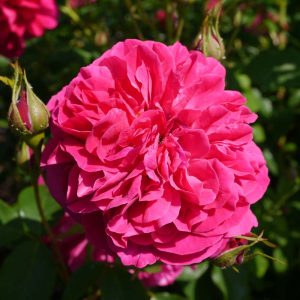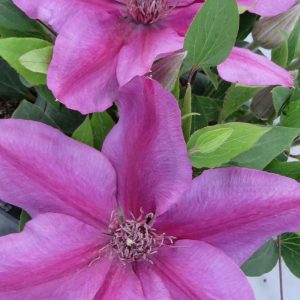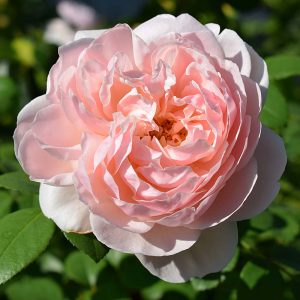Description
Salvia officinalis ‘Icterina’, commonly known as golden sage, is a small shrub that is popular for its aromatic and flavorful leaves. The leaves are a beautiful greenish-yellow color, adding a bright and cheery touch to herb gardens and borders. As a culinary herb, it is a wonderful addition to dishes such as stuffing, sauces, and roasted meats. ‘Icterina’ is a hardy plant that prefers full sun to partial shade and well-draining soil. It is also a great companion plant for other herbs such as thyme and oregano.
Key Facts
- Common Name(s):Sage ‘Icterina’
- Hardiness:Fully hardy through most of the UK
- How big will I get? Salvia officinalis ‘Icterina’ can grow to a height of 1m and a spread of 1m.
- Did You Know That:The name salvia comes from the Latin world “salvus” meaning well or unharmed?
Plant Calendar
A rough guide to how this plant will change through the year.
| Jan | Feb | Mar | Apr | May | June | July | Aug | Sept | Oct | Nov | Dec | |
| Flowering Time |  |
 |
||||||||||
| Foliage Colour |    |
   |
   |
   |
   |
   |
   |
   |
   |
   |
   |
   |
| J | F | M | A | M | J | J | A | S | O | N | D |
 |
 |
||||||||||
   |
   |
   |
   |
   |
   |
   |
   |
   |
   |
   |
   |
Care Guide

Soil Requirements
Salvia officinalis ‘Icterina’ prefers moist but well-draining soil. This plant can grow in soil with a wide range of pH levels, it is not picky about the pH level of the soil.

Best Position
Salvia officinalis ‘Icterina’ prefers a sheltered position and is a very versatile plant that can cope with full shade, partial shade, or full sun.

Maintenance
Salvia officinalis ‘Icterina’ should be cut back after it finishes flowering will promote growth the following year by redirecting energy from seed production and foliage maintenance to root growth.

Pest, Diseases and Wildlife
Salvia officinalis ‘Icterina’ can have problems with slugs and snails, and it tends not to have problems with diseases. It is also known to attract bees, butterflies and other pollinators. It is not considered to be toxic.





